Over the last several decades, Carl Craig has consistently tread new ground. First gaining recognition as a pioneer of the Detroit techno scene, Craig's work has since branched into countless new directions—with works incorporating elements of jazz, funk, hip hop, and more esoteric approaches to electronic music. He has released six LPs under a variety of aliases—has hundreds of remixes to his name—founded the legendary label Planet E Communications—and has constantly pushed the boundaries of electronic sound.
Of course, his art doesn't end at groundbreaking records and remixes: in the past years, he has explored immersive gallery installations, live performances with a synthesizer-based ensemble, and more (don't fret—we'll talk in greater detail about these projects soon). He is a constant champion of fellow black creative leaders, and his drive to constantly evolve his practice is a source of inspiration to musicians and artists across many disciplines.
And of course, as readers of this blog may well realize, Craig was one of the early champions of Eurorack modular synthesizers, having used them extensively in the creation of the now-classic record Modular Pursuits. He was featured extensively in the 2013 documentary I Dream of Wires, describing how the modular synthesizer was helping him to explore new avenues in music-making. Luckily for all of us, he's still exploring.
We recently had the opportunity to talk with Craig about several aspects of his practice: about his relationship with modular synthesizers and music technology—about his drive to explore projects like the Carl Craig Synthesizer Ensemble and the installation Party/After-Party; and about his plans for the future.
If you're interested to get even deeper into Craig's work, we have four immediate recommendations.
- First? Go check out his newest release, From Beyond, a revisitation of one of his seminal works from 1989—complete with additional remixes from Seth Troxler, Ataxia, and Admn.
- Second? Go see his installation Party/After-Party at the Geffen Contemporary's WAREHOUSE—it's open until July 23rd!
- Third? Go see him perform at ARC Music Festival, running from September 1st–3rd in Chicago, IL.
- Fourth? Keep on reading for insights from the man himself.
Interview with Carl Craig
Perfect Circuit: When did you start using modular synths, and how did you first hear about them? What was your entry into the world of modular stuff?
Carl Craig: The first time that I laid eyes on a photo of modular was Switched-On Bach. I didn't have the album, but whenever I went to the library, the public library, there was always a copy when I went through—and I would see, you know, this big Moog system with somebody dressed like Bach in costume. And, you know, of course I heard the music, but growing up at that time, there started to be a lot of bleeps and blops and stuff like that that were being used in music that wasn't the BBC Radiophonic Workshop style stuff, you know. So I think, I believe Popcorn [by Gershon Kingsley] was made with modular. I don't think that was made with tape loops and edits and stuff. So my ear was always there for these, you know, weird sounds and stuff.
I went to a Lutheran school as a kid, and it was real funny thinking back about it years later. Part of our music class was based on electronic music and rhythm and syncopation and stuff like that. I remember there were illustrations in the workbook that was similar to the back of one of those Eno records, where the notation for synthesis was done with illustrations. You know, an illustration for white noise, illustration for if you use a square wave or a sine wave, et cetera, et cetera.
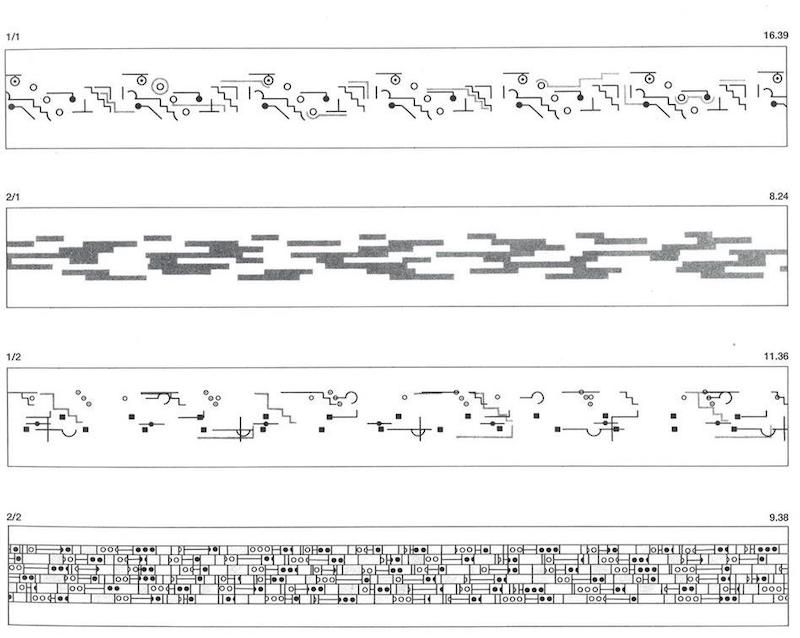 Detail from the rear cover of Brian Eno's Ambient 1: Music for Airports (1978)
Detail from the rear cover of Brian Eno's Ambient 1: Music for Airports (1978)
So, when I got introduced to Eno's ambient albums and his music for films and all this stuff and the notations that he had on the back [...] it was like, oh man, "I know that. I remember that from sixth grade!" Or whatever it was, sixth or seventh grade. So, you know, it was always kind of written, I guess, that I would somehow touch modular at some point.
My first piece of gear that's modular was a Eurorack module, which is a VM-1, a Cwejman VM-1. I got that in Germany. And Mark Ernestus (from Basic Channel) was the one who pretty much piqued my interest in these Eurorack modules. Before that, my idea of modular was always, you know, these big systems—or, you know, even getting a System 100. The Roland System 100 stuff was not cheap to buy into…so it was great to, get this piece, the VM-1. And I still have it.
PC: So to this day, you've still got your first module?
CC: Yeah, first module. And then I added on from there. But my favorite company is Cwejman. I almost bought some Doepfer stuff, but I just felt that it sounded too vintage. It didn't sound crisp enough. That's why I like the sound of Cwejman stuff.
PC: Yeah, the Cwejman stuff is kind of top of the line. It's a tragedy to hear what happened to the gentleman who ran that company.
CC: Yeah, I don't know what they're doing now, but, you know, some of the things like the phase generator—using that with the mixer, you could do like some really nice 3D-sounding circular patterns, which is quite interesting. And it's hard to see if I could find that it's possible to do it with other gear. But in the research that I have done, I haven't found anything that works quite like and sounds like the Cwejman stuff for me.
PC: So was it pretty easy to kind of integrate all of like when you first got your hands on modular stuff? Did it just kind of fit into your existing workflow? Or what was that process like?
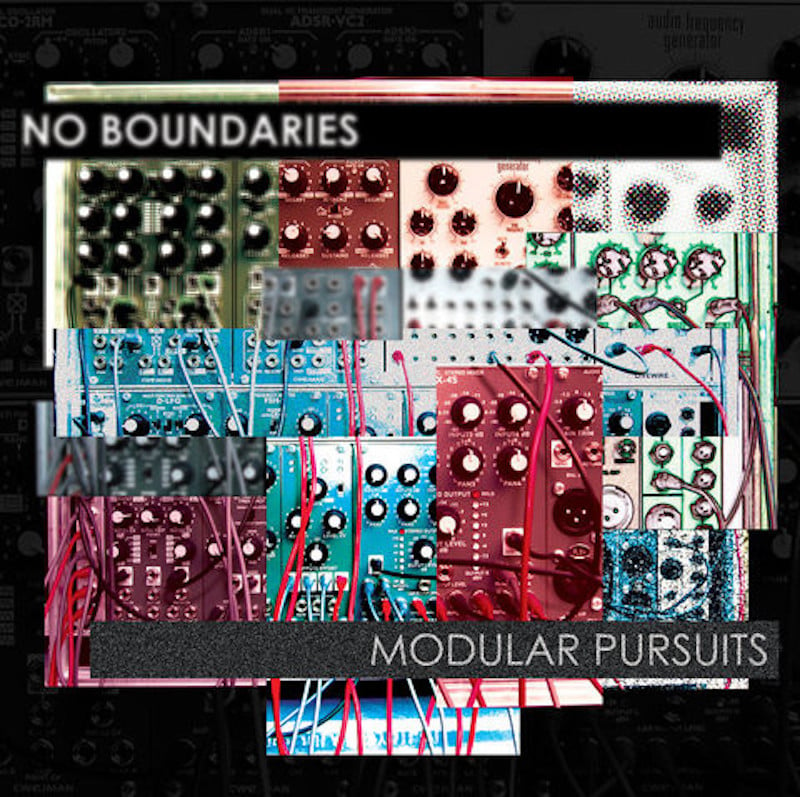 Cover image of Carl Craig's Modular Pursuits—released as Now Boundaries in 2010
Cover image of Carl Craig's Modular Pursuits—released as Now Boundaries in 2010
CC: Uh, when I started building up the system, I made a record, some releases that I call Modular Pursuits.
PC: Yeah, that 2010 record.
CC: Yeah, and that's that's specifically just the machine—you know, the modules running themselves. My my history with synthesizers is not CV. My history is MIDI. My first synthesizer was a Prophet 600. And, my SH-101, for instance, doesn't have MIDI on it, but I was able to trigger it with the HR-16. So I was able to, you know, go outside of the CV thing and still have MIDI work in some way or another for me.
So when when when I got into do a modular, I wanted to find some way of using MIDI without having to use a big external Kenton. So it really took me a while. I think I started to just say, "Well, forget it," because I already had a Kenton or two. So I just integrated the Kenton into it.
But the concept of modular for me is something I wanted to keep within the box instead of there being, you know, another box I have to carry that if I was going to take it on the road, I'd have to pack it in a suitcase or something—and if that didn't make it, then I'd have a problem with the stuff that I have in the modular box...
Everything I tried to do might have been a little bit more complex, but that kept me from moving forward. But it was with the idea that I wanted to keep it integrated—where I close up the box, I pick it up, I walk away, and I'm gone.
PC: Yeah, yeah. So like just one complete package—you're not trying to do the Voltron thing of sticking eight different parts together...
CC: No, no. Because I'm on tour all the time, I always think like I'm on tour. If I was touring with a band all the time, then I would think differently. I would think like, "Okay, well, I got to get to the airport three hours in advance with these big boxes, and I got to go to overweight, and I got to do this and I got to do that." But when I tour, I think more like a DJ—you just pack up the shit that you really need. Headphones, you know, flash drives, or whatever. And then, you get to the gig, and you plug in and you just play. And that's that's how I like it.
When I had a big MPC 3000, when I did tours, I would pack that and go. And that was cool. But again, the whole brain is there—the whole brain is in that one box. And all I had to do is my pull out my ZIP drives and stick them in. So just put in the drive, and hit play and go ahead and play whatever keyboards they bring in—whether it's a Minimoog, or a Nord, or any of that kind of stuff.
PC: Do you carry that sort of workflow into how you create when you're creating music, when you're writing songs and tracks? Do you try to kind of stick to one piece of gear, or group of synthesizers? Or when you're at home base, do you let yourself spread out a little bit more and use a little bit of everything you've got available?
CC: You know, I have a lot that's available, but I don't really...I don't have a setup like Vangelis with all the synths around the mixing console and stuff. In some cases I have some some synths that are hooked up that are in the closet, or whatever. So if I feel that I need that flavor, then I'll pull it out—but I try to relegate everything to making it as simple that if I can't finish it while I'm at home, then I could put it, you know, in my bag or put it in a suitcase in my box and then just get it on the road.
So on the road, I carry a little MPC One, and I try to have everything I can inside of that to be able to program and compose with all the sounds that I would potentially need. So then when I go home and I say, "Well, you know, I think this needs to be layered, or I need the bass sound to be different…" then I can plug in whatever synths I want to plug in, whether it's a Studio Electronics Omega or, you know, my old Prophets, and, you know, all that stuff. Or if I want to add modular on top, then I can do modular stuff. But I try my hardest to make it that if I can't finish something, I can take it on the road and finish it.
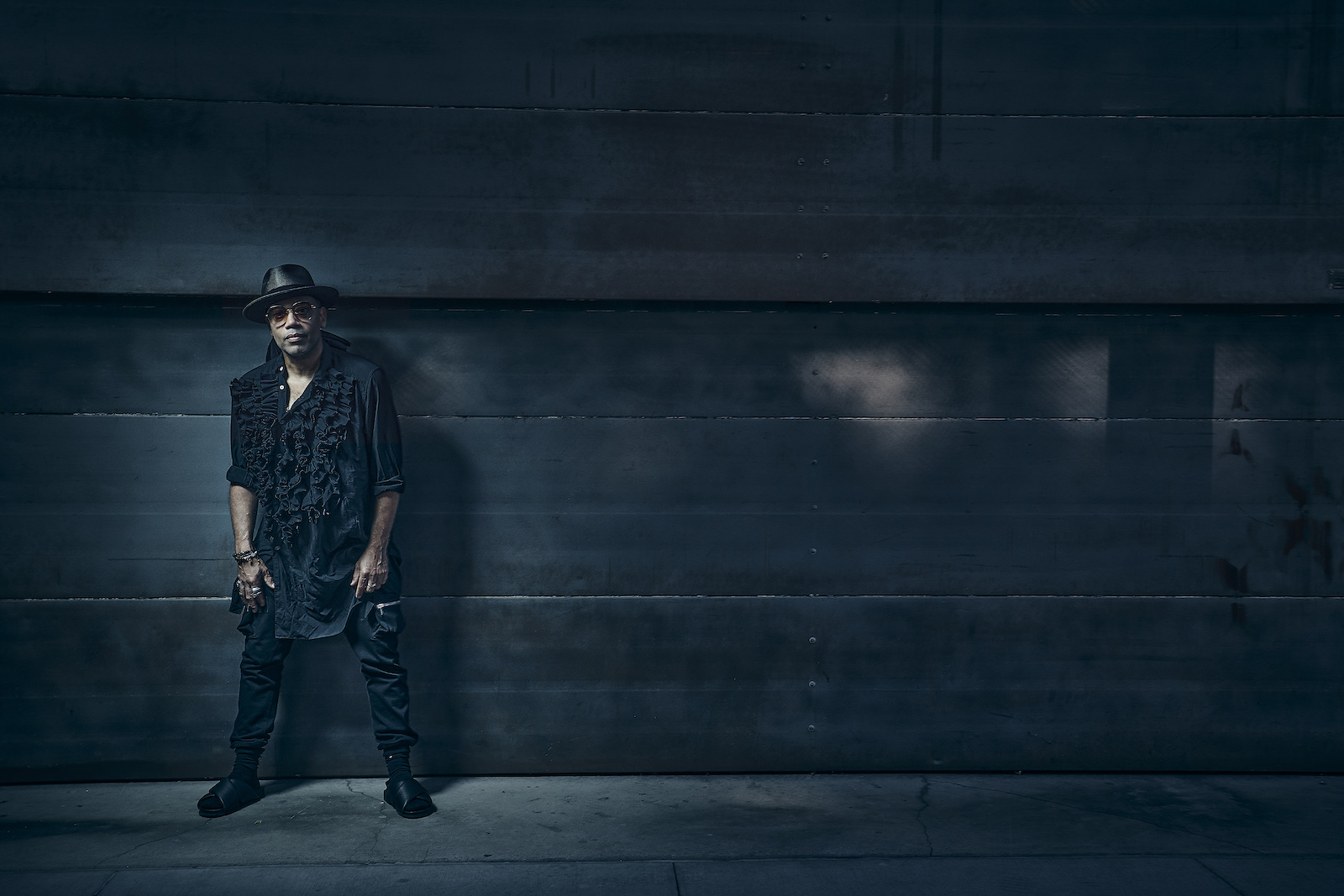
PC: Good workflow. So how do you hear about new gear? I mean, you've obviously been doing this for decades at this point—I can't imagine you camp out on like the forums and just be like, "Tell me about the new gear!" And how do you integrate new gear into your workflow?
CC: As far as synths are concerned, I'm really just interested in what's going to add texture.
With a painter—how often is there a new paint color? You know what I'm saying? It's not going to be a new paint color. It's going to be a new, you know, texture of the paint color. Like this black hole/noir kind of color that's out now that makes everything...it pulls in light, you know, and it captures light. You hear about something like that and it's like, "Okay, that's a big revelation." That's what I'm looking for, as far as gear is concerned.
I have a really good relationship with Pioneer. So whenever something new is popping up, they reach out to me and ask me to get involved in some way—to tell them what I think of whether the sliders are right, or if I like the sound, or anything like that. With synth stuff—when Dave [Smith] was alive, I was really talking to him a lot. I loved having that relationship with him. Funny, when I first met Dave, I was like, "Man, the best synth you ever made was the Pro-One." He's like, "Okay, let's drink some tequila!"
So that was, you know, that was what I love—being in that situation with a synth designer. Richie Hawtin is far more involved in new stuff because, you know, his dad was (or is?) some sort of engineer. My dad was a postman, so...[laughs]...the things that pique my interest are definitely things that are—engineering-wise—on the next level. But, I wasn't raised with that desire to chase these things down. When they do come into my stratosphere, then I'm going to say, "Okay, I want to try it," or "I don't want to try it." And it's got to really be something that what I already have won't do. It has to be something that is going to make my life easier instead of making my life harder.
Like, of course I use the MPC—but using DAWs...people ask me what DAW I use. And I say, "Well, you know, I have Pro Tools, I have Ableton, I have Logic, I have FL Studio." I have all this stuff. But each DAW is almost like learning another language.
PC: Truly.
CC: At some point, I had to I had to take the way I was looking at synthesizers and think: "Okay, really, do I need to learn a new language? I need to learn English better."
PC: [laughs]
CC: I don't need to learn French badly. I need to learn English really good. I need to be a pro at English. So, I kicked FL off the machine. I use Ableton, but I really try to pay attention to Logic. And, with Logic releasing on iPad now, that keeps me in that strata—that zone where I can do my things.
With synthesizers, if there's a lot of menu diving, I'm just not interested in doing that. I'm interested in things that are going to make my life easy—things that are going to sound really great when I push that preset. And then when I turn a few knobs and I get something that just turns into another, you know, into another organism from what I did—that's what I'm interested in.
That was the cool thing about modular—the only thing that made modular complex was setting up your patching. So, if you patch something and you didn't take a photo of it, and then pulled everything out...I was very used to that from the mixing console. If I didn't like the way a mix was, I would just pull everything out of the patch bay and start repatching in a different way. That is much easier to do on a mixing console than it is on a modular, because you really could just not find your way back, if you don't pay any attention to what you're doing.
PC: Truly, like wandering in the woods without a map.
CC: Yeah. Oh, my gosh. Without a map and without a compass.
PC: So you've had a ton of interesting projects the last few years. The Carl Craig Synthesizer Ensemble is one that's really interested us. Can you tell us a little bit about the vision behind that group? How did the pieces for that group come together?
CC: So I did a project called Versus. Versus was pieces of my music that were arranged for orchestra. It was arranged by Francesco Tristano, a great friend of mine, a virtuoso pianist. It was designed where we played it with an orchestra, but we needed to simplify it in order to perform it a bit more. And the idea of the Synth Ensemble came together.
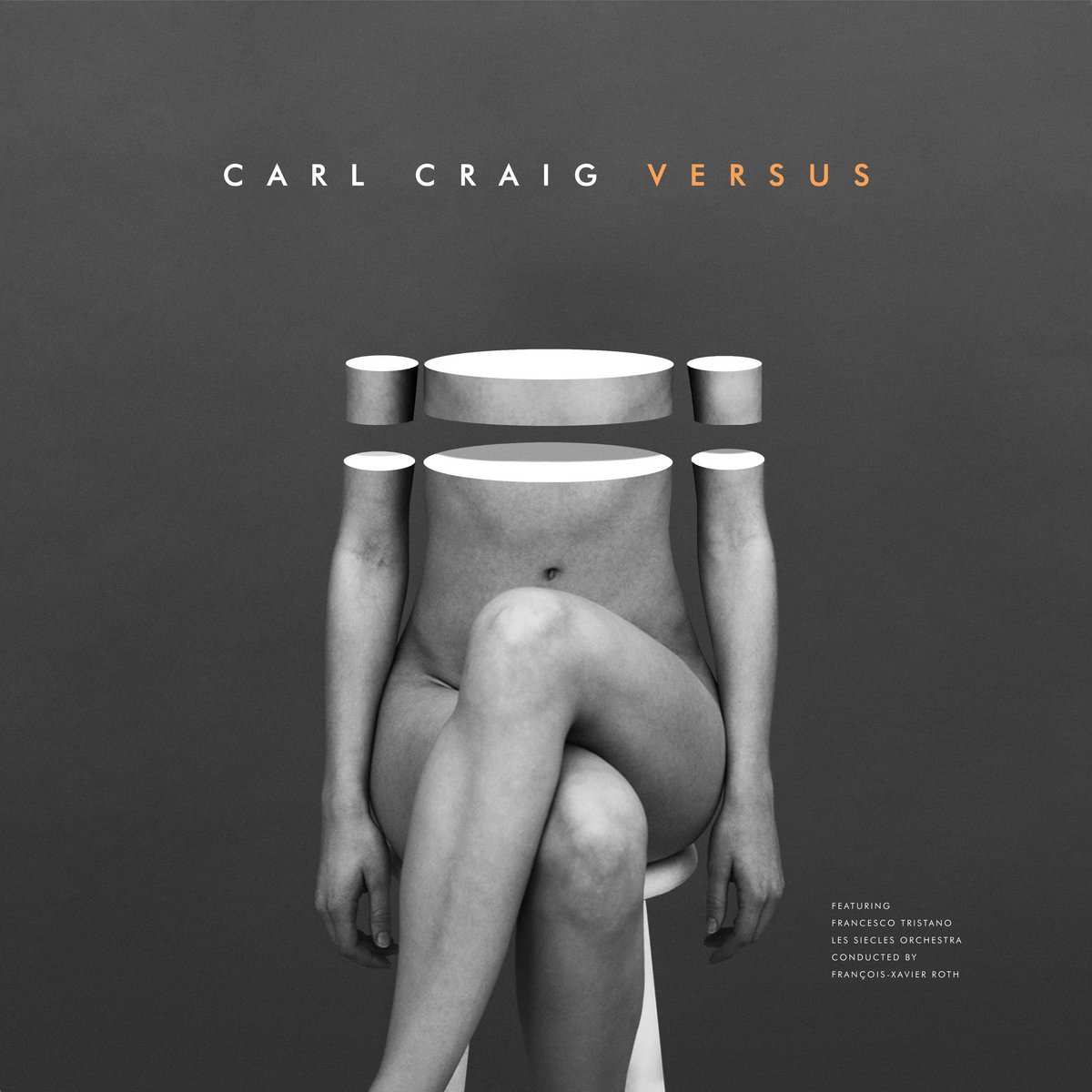 Cover art for Carl Craig's Versus
Cover art for Carl Craig's Versus
You know, like I said, Dave Smith was a friend of mine. I love Dave. So it was important to me to use Dave's synthesizers on the project. So we started out first with all Prophet 6s, and then I got rid of a couple of Prophet 6s and brought in an OB-6 in some capacity. And then the last one, Ian Fink was on, and he brought in a Prophet X.
So we have backing tracks from the orchestra, but it's all layered with synthesizer. And the concept of the synthesizer ensemble was that it wasn't jazzed. So where I come from, it's all improvisational. But the synthesizer ensemble, I wanted it to be all written and all locked in—like how I would play with orchestra, but with synthesizers. So the synthesizers in some cases took the front seat to the orchestra, and in some cases took the back seat to the orchestra backing tapes.
And then Kelvin Sholar, a great friend of mine—I met him through Francisco Mora. The first gig we did together, we were playing with Francisco and Marshall Allen from the Sun Ra Arkestra. I don't know if you've ever seen Marshall play, but Marshall plays this electronic wind saxophone that seems to predate anything else, the Casio, the Yamaha, anything—it was a custom make. And us three Geminis on stage was quite incredible.
But Kelvin is the spotlight performer for the ensemble. He plays piano, grand piano, and then me in the background with effects and treated sounds, and then I play usually a Matrixbrute and solo with SH-101.
PC: Incredible. And you guys have played at Carnegie Hall. That's wild. What was that experience like?
CC: It was incredible. It was really incredible. We also did the Barbican in London as well. Great venues, amazing venues to play in. And that room—King Britt made a great decision for us to play in that particular room at Carnegie Hall for the Afrofuturism series, because it was a much better, much tighter room for what we did. It's amazing.
It's like being nominated for a Grammy. No one can ever take that away from you. You know what I'm saying? It's the same thing with Carnegie Hall. No one can ever take that away from me. I played at Carnegie Hall. What'd you do? [laughs]
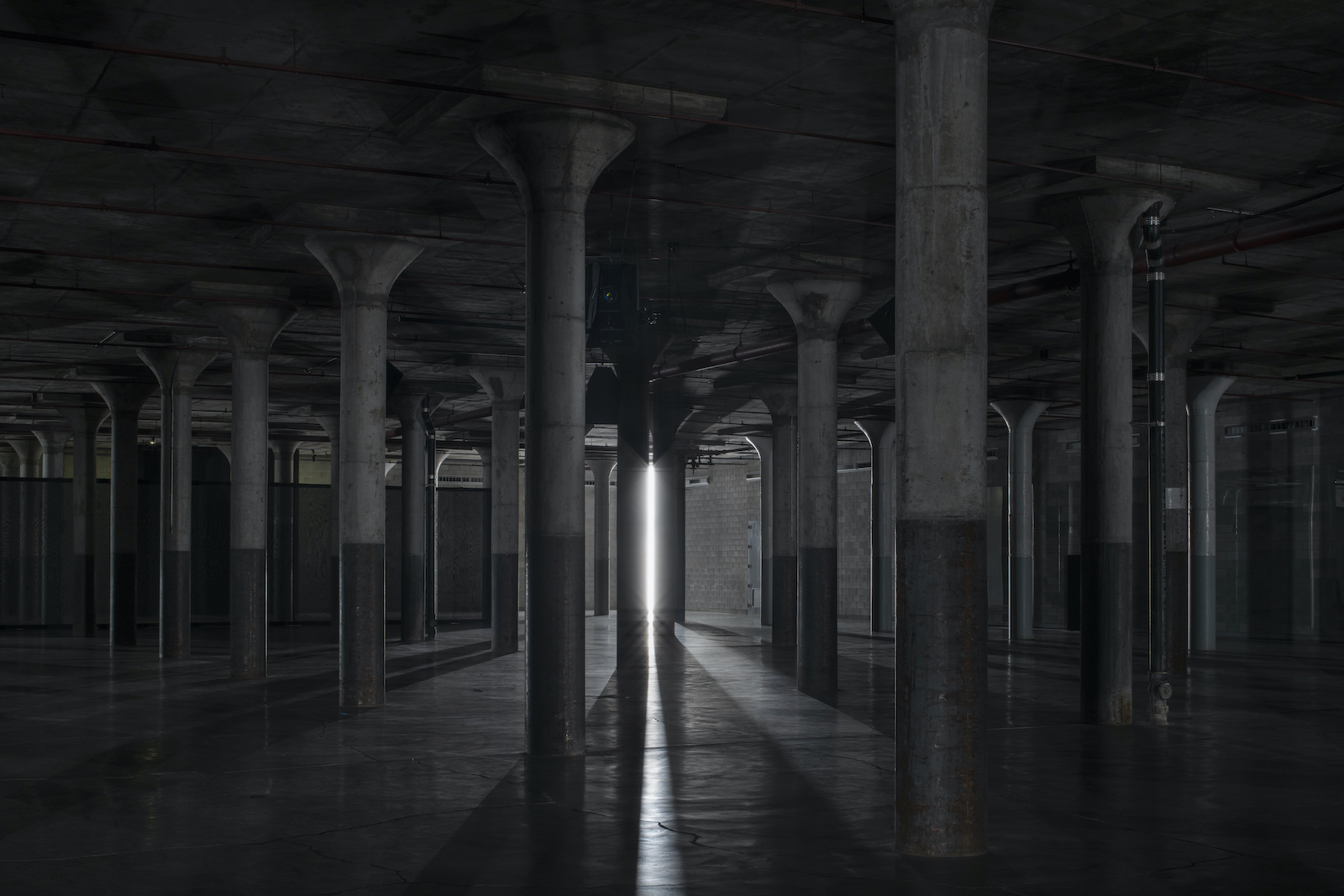
[Above: installation version of Craig's Party/After-Party]
PC: Hell yeah, life achievement. Speaking of amazing places, you've been working with museum installations, bringing techno aesthetics into a "high art" context. Can you tell us a little bit about Party/After-Party? How did that piece come together?
CC: The Party/After-Party project was commissioned by Dia [Art Foundation] in New York. And it opened at Dia Beacon, which is in upstate New York. It's a multi-channel sound installation with light. The idea is that it is about my personal experiences as a traveling DJ, dealing with playing empty rooms before anybody got in there, and then dealing with the after effects of playing loud music and being the life of the party when you get back to the hotel room...and have to deal with trying to bring yourself down from the adrenaline rush that you got from the party...being in hotels in foreign countries where there's nothing on TV that's in English. Dealing with the tinnitus that comes from being around loud music for two-hour, three-hour sets, but not only that, for being around loud music for all of my life since I was a kid.
So I suffer from tinnitus, and in some cases it's worse because my sinuses are clogged or my ears are clogged. It's driven great men to insanity. So let's hope I'm not one of them. [laughs]
PC: Fingers crossed. So, Party/After-Party is more of a personal reflection on the experiences that you've had—it's not all sunshine and roses.
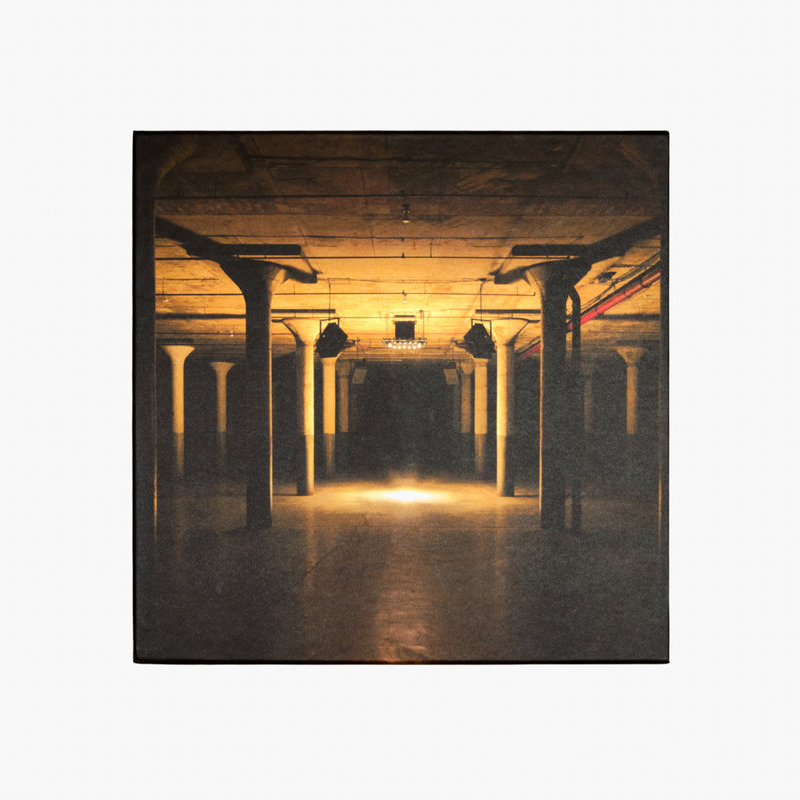 Cover art for double LP release based on the Party/After-Party installation
Cover art for double LP release based on the Party/After-Party installation
CC: Yeah, definitely. And that's the thing that people believe about music and musicians—that it is all charmed, and rose petals and candy canes and rainbows and unicorns and stuff. I mean, Lenny Kravitz makes it look amazing. Rolling Stones has done it so easily over the last fifty-plus years.
People expect that, because it's rock and roll, you've got to be the life of the party. They don't understand that being the life of the party for a lot of those guys, I don't know about Kravitz, but a lot of other rockers—there's a lot of drugs involved. There's a lot of liquor involved. There's a lot of boredom that's involved. That's why you'd see in the '70s and '80s when they wreck hotel rooms and throw TVs out the windows...they're bored, and they're drunk, and in some cases depressed.
And that's something that I'm sure a lot of DJs have gone through as well. I haven't done that...
PC: Thrown a TV out a window?
CC: [Laughs] No, no, I haven't thrown any TVs out of windows. I don't throw pies at the audience. I don't throw cakes. [Laughs] I don't have a gimmick. That's not my thing.
So when I was commissioned to do the piece, because I'm not a visual artist, I'm not a painter, I'm not a graphic illustrator—I had to come with something that really made sense to me, and the only thing that made sense was my own life. So I put my own life under the microscope doing this piece, put it on display.
PC: Yeah, you're the best person to tell your own story, truly.
CC: True that.
PC: So, what's next for you? What are you excited to hit soon here? And then what have you been listening to? What artists are exciting you these days?
CC: You know, I've been working constantly on perfecting the next step of my sound and my journey. So like, I'm here in a hotel with my MPC and my iPad, and I've just been really working through...where sonically I'm going to go next.
I've been commissioned to do some soundtrack work, so I've been listening to, and I put together, actually, maybe the best soundtrack playlist that I've had in a while. That includes, of course, Hans Zimmer and Stephen Price and Jóhan Jóhansson, Matt Quayle. And I saw this movie not long ago, but I didn't realize how good the soundtrack was. It's by this guy, Tyler Bates. It's called X. It's a horror movie...
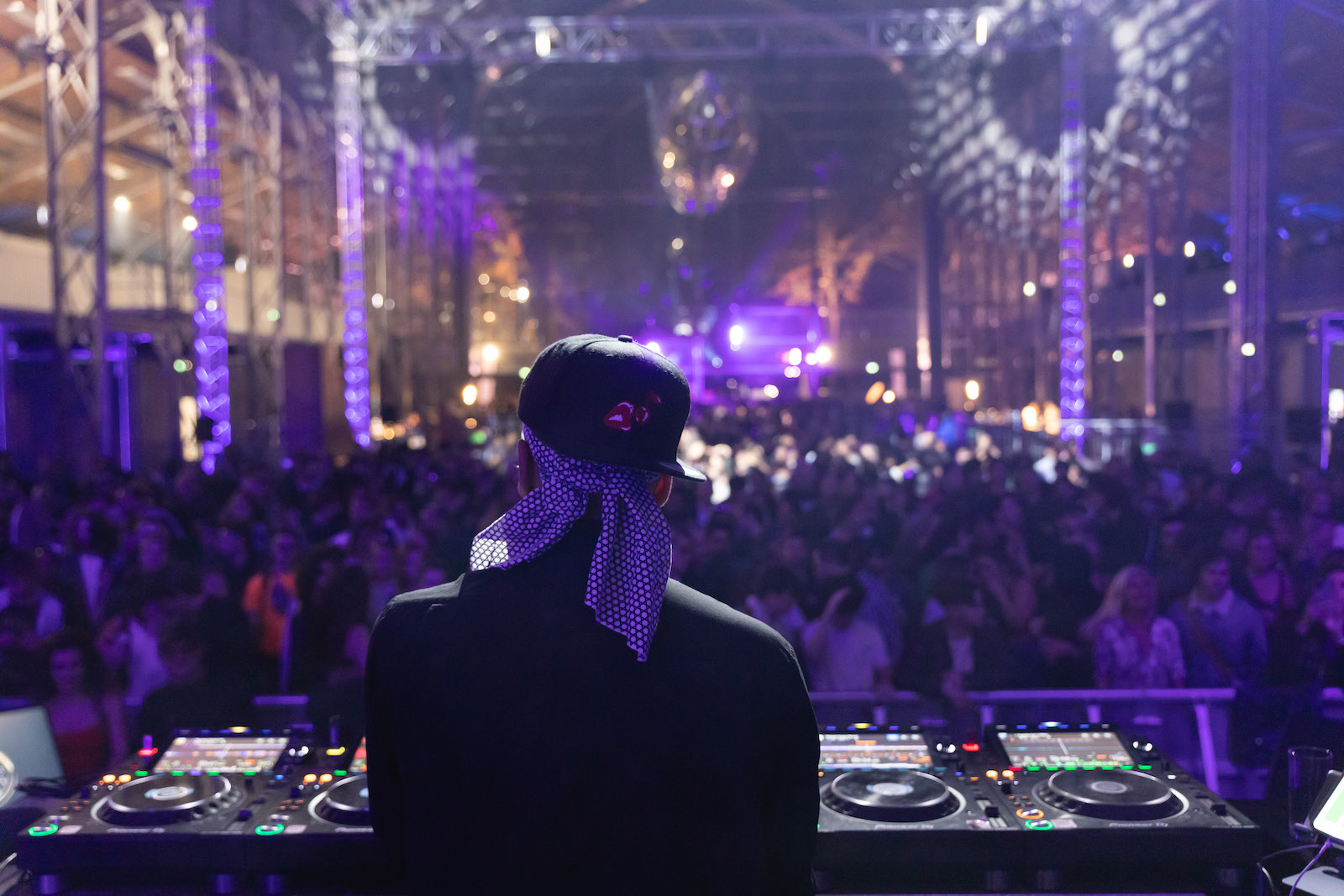
PC: Yeah, I heard about this. I'm big into horror movies, but I haven't seen it yet. So you're saying pay attention to the soundtrack?
CC: Yeah, Tyler Bates did a really interesting job with this. It actually sounds like an updated version, in some cases, of what Goblin did with Suspiria. So I'm feeling that. I'm definitely feeling that. I'm feeling what he's doing.
But like, Jóhan Jóhansson did some great things with the low end. Some of the ideas that are in the Blade Runner soundtrack that Hans Zimmer did partnered with Benjamin Wallfisch—there's some great sonic textures in there, great ideas.
So yeah, that's, I'm paying attention to. Like, soundtracks with just a lot of impact on the low end, that sound more like abstract, incidental music than music with melody. And that's more my style that when I play out too, when I DJ. It's more around the impact, and less around every tune I play being a song that you can sing to.
PC: Yeah. I can see a lot of crossover from, you know, controlling the dance floor with a lot of low end to like...you know, I remember watching a lot of movies in the theaters. And, you know, you're in a dark room, you're staring right ahead, you're focused, and you've got these massive sound systems. You really feel all the low end and all of the surround sound. I can see a lot of crossover there.
CC: Yeah, definitely. When I saw Gravity, that movie had a lot of impact on me, listening to it in IMAX. It was just unbelievable. Unbelievable. The positionings that they use, not only low end, but the craziness of the violins, and these brooding sounds and stuff that were just going around the room.
It reminded me a bit of IRCAM in Paris. They have like 60 speakers in the ceiling. This one composer, I can't remember what her name is, but she did a composition of birds swarming, and they used Max/MSP for direction. It was quite amazing. And the closest that was there for me was watching Gravity in IMAX.
The most recent project was the, is the shit that's in New York. And I did a playlist for that, which I think has a closer experience between IMAX and the IRCAM sound system.
Dive Deeper
As you can see from this short conversation, Craig's work is vast—fueled by curiosity and pushing forward with staggering momentum.
Head to The Geffen Contemporary at MOCA to experience Party/After-Party. Installed at the Geffen Contemporary's WAREHOUSE until July 23rd!
See Craig perform at ARC Music Festival, taking place in Chicago, IL this September 1st–3rd.
And of course, check out Craig's latest release on Planet E Communications: Carl Craig Presents Psyche: From Beyond, out now on digital and 12" vinyl!











